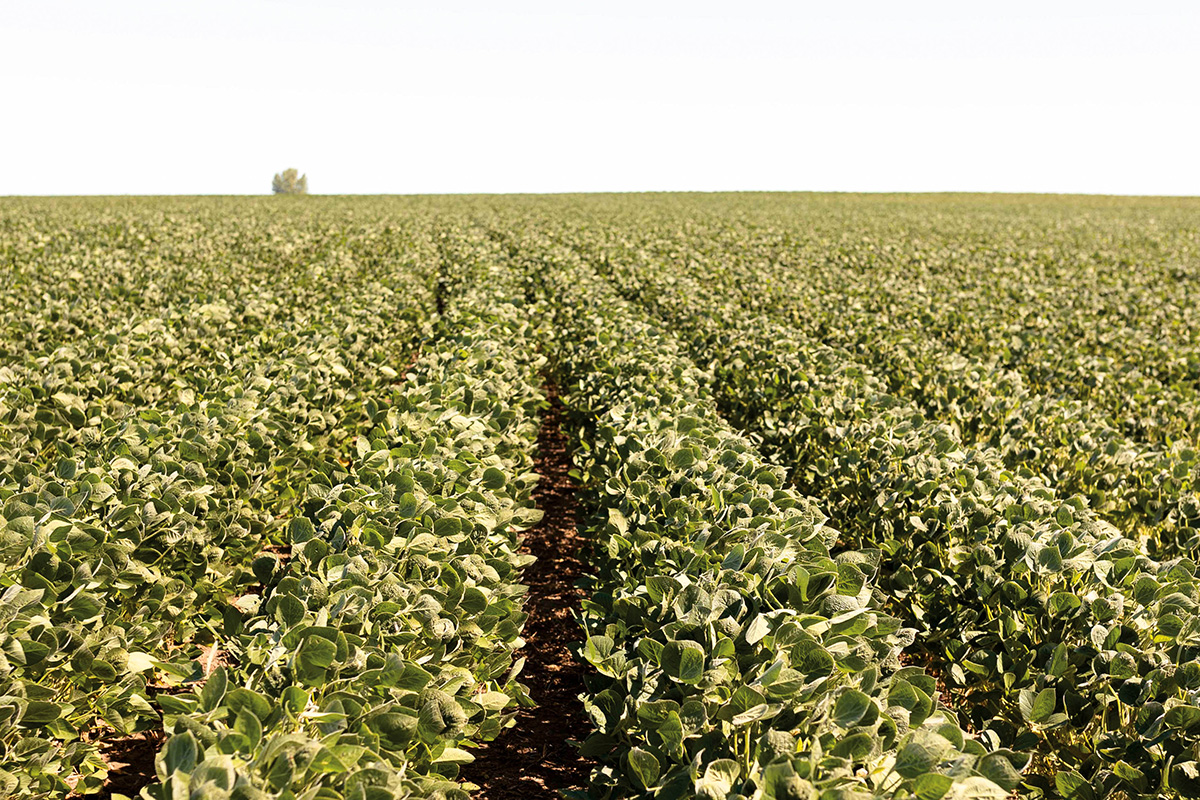
(Photo: Joclyn Bushman/Iowa Soybean Association)
Think Tank brings together all facets of soybean industry
September 27, 2022 | Bethany Baratta
Soybean farmers know that one constant in agriculture is change. Change in the customers’ needs and what’s needed on the farm to drive production and profitability. In 2021, staff from various state soybean organizations started thinking about these changes.
Katherine Drake Stowe, then the research coordinator for the North Carolina Soybean Producers Association, teamed up with Ed Anderson, senior director of research for the Iowa Soybean Association’s (ISA) Research Center for Farming Innovation (RCFI) and other state soybean research staff.
“We wanted to start thinking about how we in the soybean research community can help farmers thrive in the face of these new challenges and opportunities,” says Stowe.
Thus, the Soybean Research Forum and Think Tank was born. Participants, including researchers, farmers, and industry partners, thought about how the research community could drive the industry forward and help soybean growers face these challenges.
Those in attendance identified “grand challenges” farmers face, including technology and data; climate, carbon, and ecosystems marketplaces; and uses for soybean oil.
Researchers also said they wanted to be more connected to the entire value chain. “They wanted to better understand how what they’re doing in the field impacts farmers’ access to markets,” Stowe says. Finally, researchers asserted that greater collaboration across entities and disciplines would benefit soybean farmers.
“They said we needed a better understanding of who was doing what, and where there were gaps and opportunities to leverage current resources to fill those holes,” Stowe says.
Think tank in action
Not wanting to let the ideas generated during the meeting sit on a shelf, the researchers determined that a specific project could help these ideas take flight.
That’s where the U.S. Soybean Research Collaborative (USSRC) came into play.
Led by Stowe, USSRC is a project that works to bring more collaboration and coordination to soybean checkoff research.
“Our mission is to complement and extend the efforts of our existing organizations for more impactful discovery and development of soybeans,” she says.
Soybean leaders in Iowa and Illinois provided initial funding to kickstart the USSRC. Four additional state checkoff partners-Ohio, North Dakota, South Dakota and North Carolina-are providing funding for fiscal year 2023 and more are in the process of reviewing and acting on investment proposals.
Stowe says USSRC fosters a broad industry and value chain view for soybean research opportunities that move beyond traditional production research and bridge the gap between supply and demand.
That’s what makes the U.S. Soybean Research Collaborative different.
For the first time, the industry has one dedicated staff person, Drake Stowe, to focus daily on how the soybean industry can improve collaboration and communication by fostering the sharing of knowledge and ideas throughout the value chain.
Guiding the collaboration, Stowe nurtures these relationships by better understanding what checkoff groups, researchers and industry partners are doing. She thinks about how the industry can improve coordination by executing on common goals and a shared vision. USSRC provides the infrastructure for partners to work together on larger projects and grant applications.
“To help farmers capitalize on new opportunities, we must think about soybean research differently,” Stowe says. “The soybean checkoff has had tremendous success over the last 30 years, but we’ve grabbed a lot of the low-hanging fruit. Growers’ questions today are much more complicated than they were 30 years ago. To answer those questions, it will take a coordinated team of experts from various disciplines, institutions and states.”

Expanding opportunities
The 2022 Think Tank event, hosted in Indianapolis this summer, involved various participants ranging from researchers to farmers and sustainability experts to food company executives.
Guiding the event, Stowe challenged participants to think about soybean research and topics differently. This year’s Think Tank focused on four specific areas: aquaculture, renewable diesel, plant protein and technology.
“We wanted to look at topics that would help us bridge the supply and demand gap,” Stowe says.
This approach helps researchers better understand the entire value chain, a request stemming from last year’s event. Experts provided an overview and the needs of these specific markets. Split into groups comprised of various interests and expertise, attendees discussed the opportunities and challenges of each market and how those in the soy value chain have a role to play.
“There were a lot of ideas in the room from a diverse group of folks—farmers, researchers, industry and university— collaborating to discuss the best ways to invest research dollars to advance the soybean system through new uses, increased demand or new technologies to help producers,” says Brent Swart, Iowa Soybean Association (ISA) District 1 director and farmer near Spencer.
What’s next?
But what’s the future of aquaculture, renewable diesel, plant protein and technology? What role do farmers play in these spaces? What’s the role of industry or state associations, such as ISA?
Watch for future issues of the Iowa Soybean Review as we break down these topics and opportunities.
Back